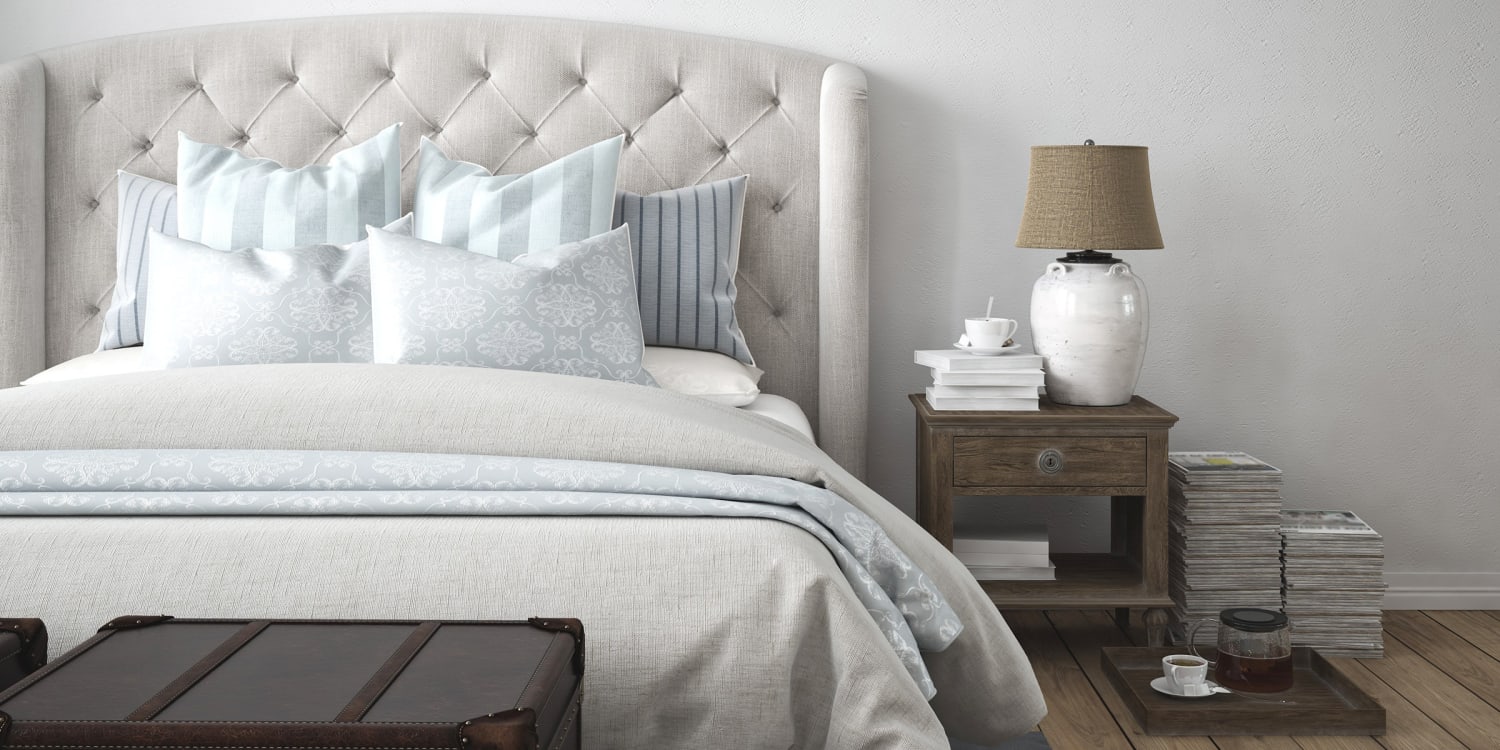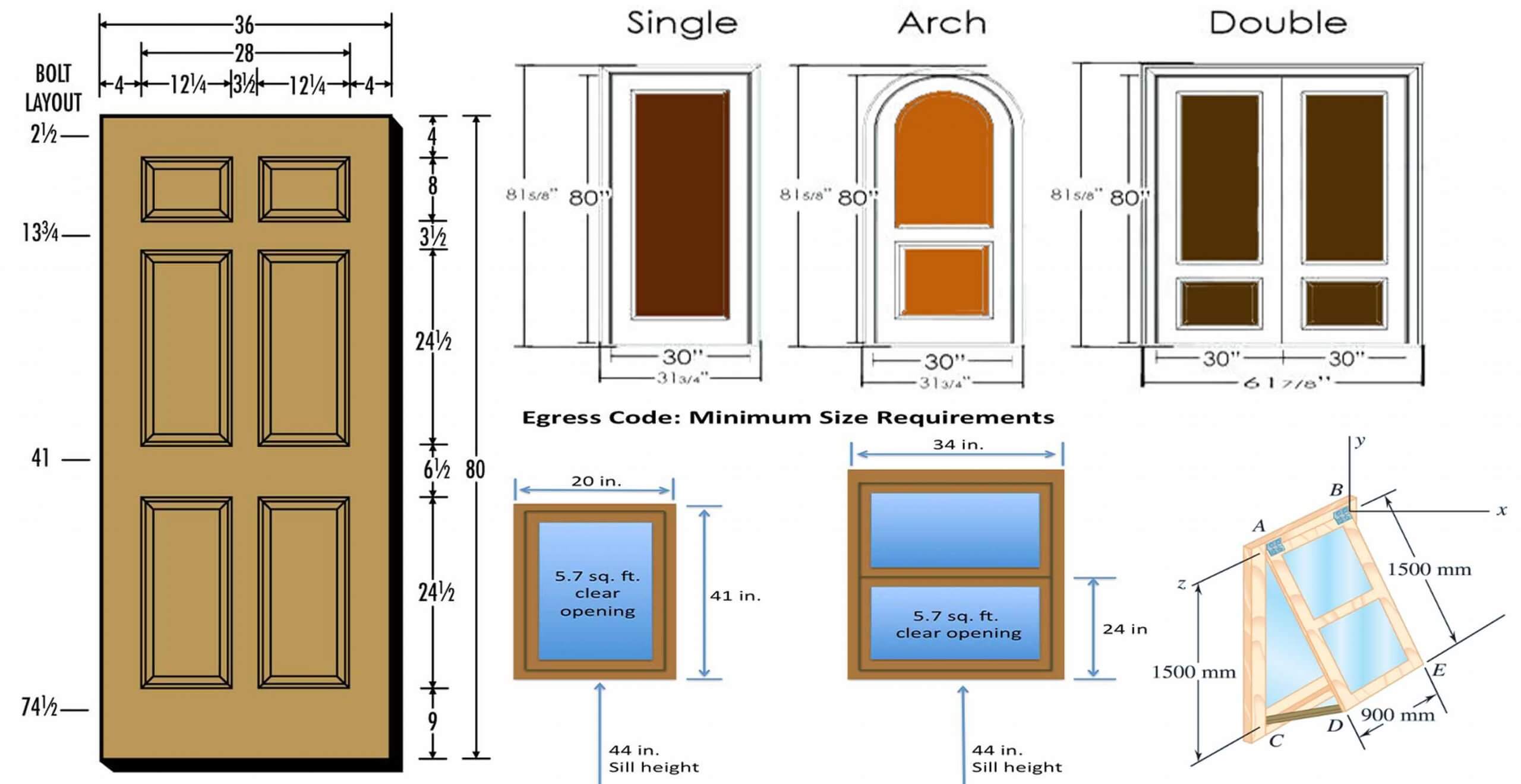The Importance of Privacy and Security: Does A Bedroom Have To Have A Door

A bedroom door serves as more than just an entrance; it’s a fundamental element that contributes significantly to the privacy and security of a space. Its presence provides a sense of personal autonomy and a safe haven, especially for individuals who need a designated area for rest, relaxation, and personal activities.
Privacy and Personal Space
A bedroom door establishes clear boundaries between the personal and the public. It offers a refuge where individuals can shed the expectations and demands of the outside world and retreat into their own space. This sense of privacy is crucial for emotional well-being and personal development. It allows individuals to express themselves freely, pursue their interests, and engage in activities without feeling observed or judged.
Functional Considerations

A bedroom door serves a crucial role in enhancing the functionality and practicality of a bedroom space. It goes beyond mere aesthetics and plays a vital role in facilitating a conducive environment for rest, relaxation, and personal activities.
Noise Control and Temperature Regulation
The presence of a door allows for effective noise control, creating a peaceful and quiet sanctuary within the bedroom. By acting as a barrier, the door minimizes the intrusion of external sounds, such as traffic noise, conversations, or household activities. This is particularly beneficial for individuals who are sensitive to noise or require a quiet environment for sleep or work.
Furthermore, a door enables temperature regulation within the bedroom. It allows for the creation of a distinct microclimate, enabling residents to adjust the temperature to their preference, whether it be cooler for sleep or warmer for relaxation. This can be achieved through the use of heating or cooling systems, as well as by controlling the airflow between the bedroom and other areas of the house.
Dedicated Space for Sleep and Relaxation
A door effectively defines the bedroom as a distinct and separate space, providing a dedicated area for sleep and relaxation. This separation allows for a sense of privacy and autonomy, creating a personal sanctuary where individuals can unwind and recharge.
The door serves as a physical boundary, separating the bedroom from the rest of the house and creating a sense of seclusion. This separation can be particularly beneficial for individuals who value privacy or require a quiet and undisturbed space for sleep or relaxation.
Advantages of Having a Door, Does a bedroom have to have a door
- Enhanced Privacy: A door provides a physical barrier, ensuring privacy and seclusion within the bedroom. This is crucial for personal activities such as changing clothes, sleeping, or simply seeking solitude.
- Improved Noise Control: A door effectively minimizes noise intrusion from other areas of the house, creating a peaceful and quiet environment for sleep and relaxation.
- Temperature Regulation: A door allows for the creation of a distinct microclimate within the bedroom, enabling residents to adjust the temperature to their preference.
- Dedicated Space: A door clearly defines the bedroom as a separate space, providing a dedicated area for personal activities and promoting a sense of autonomy.
- Enhanced Security: A door provides an additional layer of security, deterring unauthorized entry and offering a sense of safety within the bedroom.
Potential Drawbacks of Not Having a Door
- Lack of Privacy: The absence of a door compromises privacy, exposing personal activities and belongings to view from other areas of the house.
- Difficulty in Creating a Separate Space: Without a door, it becomes challenging to define the bedroom as a distinct space, making it difficult to create a sense of privacy and seclusion.
- Noise Disturbances: The lack of a door can lead to increased noise levels, disrupting sleep and relaxation due to the intrusion of sounds from other areas of the house.
- Temperature Fluctuations: Without a door, the bedroom becomes susceptible to temperature fluctuations from other areas of the house, making it difficult to maintain a comfortable environment.
Design and Aesthetics

A bedroom door, often overlooked as a mere functional element, can significantly impact the overall design and aesthetic appeal of a room. It serves as a visual anchor, defining the space and influencing the flow of the room’s design. A thoughtfully chosen door can elevate the bedroom’s style, seamlessly integrating with the decor and enhancing the overall ambiance.
Door Styles, Materials, and Finishes
The selection of door styles, materials, and finishes offers a wide range of possibilities to complement diverse bedroom themes and decor.
- Traditional Styles: Classic designs like paneled doors with intricate moldings or raised panels create a timeless and elegant feel. These doors often feature solid wood construction, adding warmth and sophistication to the bedroom.
- Modern Styles: Sleek and minimalist designs, such as flush doors with clean lines and contemporary hardware, are ideal for modern and contemporary bedrooms. These doors often feature materials like glass, metal, or high-gloss finishes, adding a touch of sophistication and a sense of spaciousness.
- Rustic Styles: Reclaimed wood doors with distressed finishes or barn doors with hardware accents bring a rustic charm and warmth to the bedroom. These doors often feature natural wood textures and imperfections, adding character and authenticity.
The choice of material plays a significant role in the overall aesthetic and functionality of the door.
- Wood: A classic choice for bedroom doors, wood offers warmth, durability, and a wide range of styles and finishes. Solid wood doors are heavier and provide excellent sound insulation, while engineered wood options offer affordability and stability.
- Glass: Glass doors create a sense of openness and allow natural light to flow through the room. Frosted or patterned glass provides privacy while maintaining a sense of light and airiness.
- Metal: Metal doors, often made of steel or aluminum, are durable and modern. They can be powder-coated in various colors and finishes, adding a contemporary touch to the bedroom.
Finishes play a crucial role in defining the overall look and feel of the door.
- Paint: A versatile option for customizing door colors and finishes, paint allows for a wide range of shades and effects, from bold statement colors to subtle, neutral tones.
- Stain: Enhances the natural beauty of wood by bringing out its grain patterns and adding depth and richness. Stains offer a variety of colors and finishes, from light and natural to dark and dramatic.
- Veneer: Thin layers of wood applied to a core material, veneer offers a cost-effective way to achieve the look and feel of solid wood. It is available in a wide range of wood species and finishes.
Bedroom Layout and Door Integration
The placement and design of the bedroom door are essential for creating a functional and aesthetically pleasing layout. A well-placed door can enhance the flow of the room, optimize space utilization, and create a sense of balance and harmony.
- Centered Placement: Placing the door in the center of a wall can create a sense of symmetry and balance, especially in rooms with a symmetrical layout. It also ensures that the door is accessible from both sides of the room.
- Off-Center Placement: Placing the door off-center can create a more dynamic and interesting layout, especially in rooms with an asymmetrical design. This can also be used to highlight a specific feature of the room, such as a fireplace or a large window.
- Pocket Doors: These doors slide into a wall cavity, saving space and creating a clean, minimalist look. They are ideal for small bedrooms or rooms with limited space.
- Barn Doors: These doors slide along a track mounted on the wall, adding a rustic and industrial touch to the bedroom. They can be used to separate different areas within the room or to create a unique entryway.
